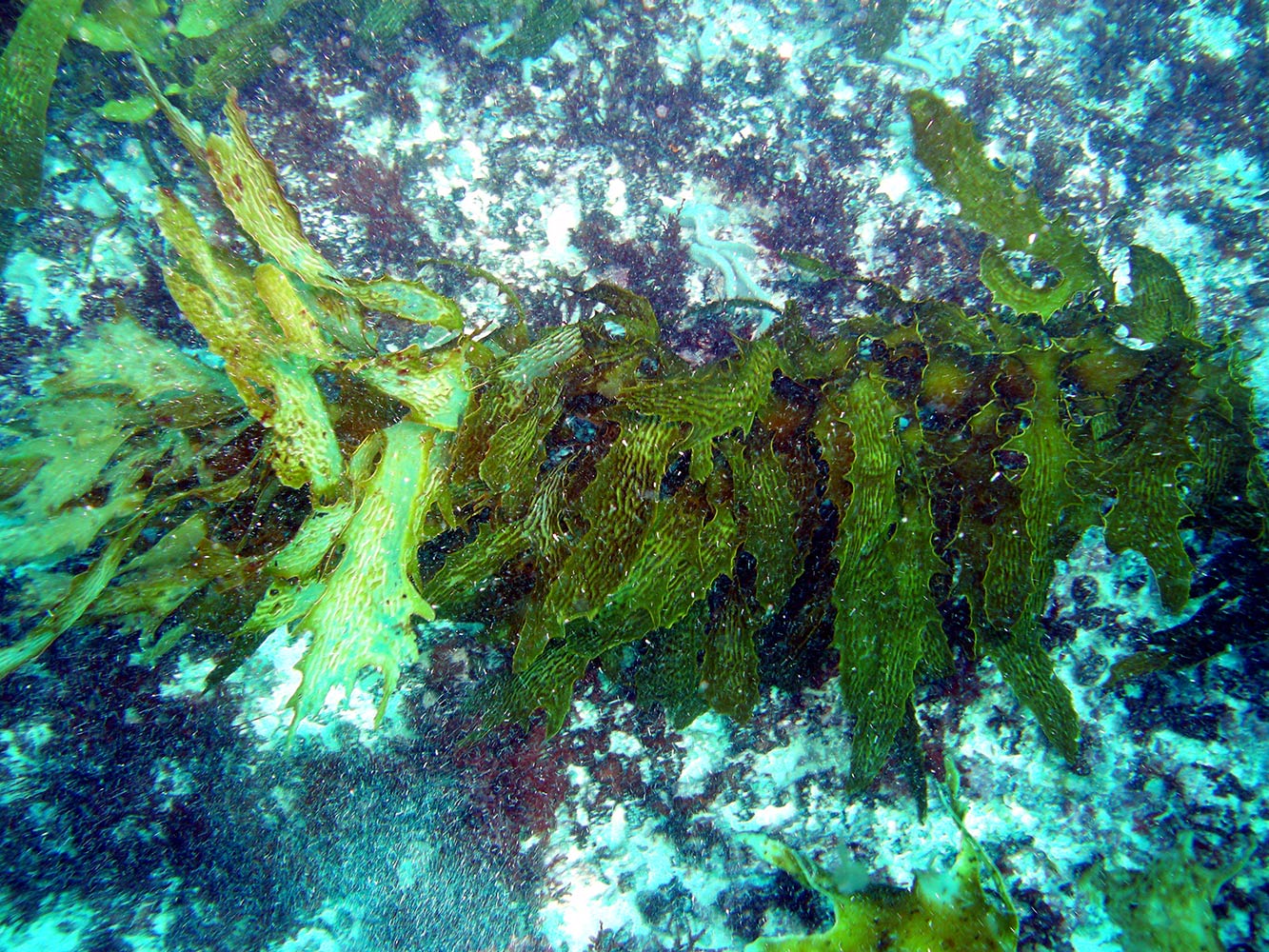Kelp needs our help
The Great Southern Reef stretches along the coastline of southern Australia, from New South Wales across the Great Australian Bight to Kalbarri in Western Australia. It is a rich and diverse ecosystem, dominated by dense forests of kelp.
Kelp is a type of seaweed—if you’ve been swimming on the beaches of the south coast of Australia, you’ve likely encountered drifting clumps of it whacking you on the legs as you jump the waves. It’s generally pretty thick, almost rubbery in texture, and is an important source of food and habitat for countless marine animals.
The kelp forests of the reef are threatened by increasing ocean temperatures, with their extent and area in decline, particularly off the coast of Western Australia. But that’s not the only issue they face. The dominant species of kelp found in the Great Southern Reef is Ecklonia radiata, and this species of kelp also suffers from another problem—bleaching.

Although we’re familiar with bleaching in the context of tropical corals, where the coral expels its symbiotic algae leaving a white (’bleached’) coral, the kelp’s problem is a bit different. Kelp itself is a type of algae, and the bleaching process is simply a whitening caused by a loss of pigments. These pigments are used for photosynthesis—their loss means the kelp can’t photosynthesise as effectively and it can lead to death of the seaweed.
Scientists aren’t 100 per cent sure exactly what causes kelp bleaching. Various stressors are thought to play a role, including increased temperature, increased exposure to UV radiation on days when the UV index is high, or infection from virus-like particles. In other cases, it can be caused by pathogenic (disease-causing) microbes. These microbes are already living on the kelp, usually in small numbers. Environmental disturbances can disrupt the microbial community dynamics, leading to an increase in the pathogenic microbes and consequent bleaching.
Kelp is also facing a second threat. As waters warm, tropical species such as kelp-eating fish and sea urchins are moving further south, into the northern reaches of the kelp forests’ range. The fish in particular can eat a lot of kelp, and their munching makes for a double whammy—the combined impact of bleaching and the fish’s feeding can be devastating for the kelp forests.

The winner of one of the Australian Academy of Science’s Max Day Environmental Science Fellowship Awards for 2018, PhD student Charlie Phelps, is working to better understand the causes and impacts of kelp bleaching. In particular, she will be investigating the impact of a particular microbe (called R10) on Ecklonia radiata. Carrying out a series of controlled experiments in tanks, she will expose the kelp to the pathogenic microbes at various temperatures and record the rates of bleaching. She will also add tropical sea urchins into the tank, to see how much of the bleached kelp they eat and how this affects kelp recovery. The results will help us understand how the kelp forests of the Great Southern Reef will fare in the future.





